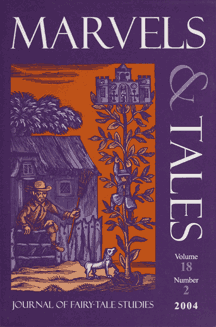Volume 18, Issue 2 (2004) The Arabian Nights: Past and Present
Preface to the Special Issue on “The Arabian Nights: Past and Present”
Ulrich Marzolph, Guest Editor
As of 2004, three hundred years have passed since the introduction of the most influential work of Oriental fiction to a Western audience. Published in 1704 for the first time in a European language, Antoine Galland’s Les Mille et une Nuits presented the adapted French translation of a work that through the centuries of its previous and posterior existence can best be characterized as humanity’s most ingenious device to integrate diversified narrative material into a cohesive whole, as a collection possessing the potential to combine tales and stories from the most diverse origins, sources, and genres, as an omnium gatherum and a true shape-shifter in terms of narrative content. While arching back to ancient Indian tradition, the collection probably originated at some unknown period in Sassanian Iran under the title of Hezâr afsân (A Thousand Stories); it was translated into Arabic as Alf laylah wa-laylah (A Thousand and One Nights) and in English tradition gained popular renown as The Arabian Nights’ Entertainments or simply the Arabian Nights.
Read more...From the Editor
From the Editor
Donald Haase
Preface
Articles
Galland’s “Ali Baba” and Other Arabic Versions
Aboubakr Chraibi
Siblings in Alf laylah wa-laylah
Hasan El-Shamy
Shahrazâd is One of Us: Practical Narrative, Theoretical Discussion, and Feminist Discourse
Suzanne Enderwitz
Slave-Girl Lost and Regained: Transformations of a Story
Geert Jan van Gelder
Creativity, Random Selection, and pia fraus: Observations on Compilation and Transmission of the Arabian Nights
Heinz Grotzfeld
Framing in Oral Narrative
Lee Haring
Political Thought in The Thousand and One Nights
Robert Irwin
Further Considerations on Galland’s Mille et une Nuits: A Study of the Tales Told by Hanna
Sylvette Larzul
The Teacher and the Taught: Structures and Meaning in the Arabian Nights and the Panchatantra
Sadhana Naithani
Open Access Article
Professional Notices
Marvels & Tales Editors
Reviews
Contributors
Contributors
Marvels & Tales Editors
Index

From the WSU Press Catalog
The Arabian Nights in Transnational Perspective offers numerous commentaries on the well-known tale. Published by Wayne State University Press in 2007, this collection comes together to explore the tale’s many translations, adaptations, and oral tradition.
Edited by Ulrich Marzolph, this collection includes ten articles from Marvels & Tales, volume 18, issue 2, as well as nine new essays.
If you are interested in finding out more about The Arabian Nights in Transnational Perspective or to purchase a copy of this collection, please visit the Press’s website page dedicated to this book.


